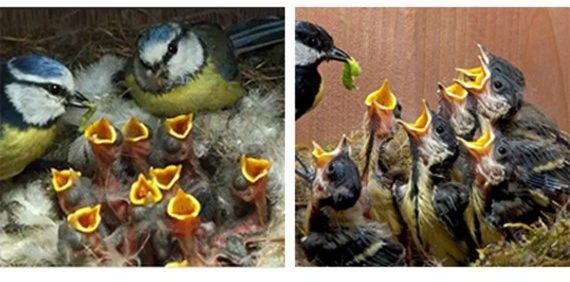REPRODUCTIVE SYSTEMS IN VERTEBRATES
CONTENT
(B) Reproductive Systems in Bird and Mammals
- Structures of the Male and Female Reproductive Systems
- Parts of the Reproductive Systems and their Functions
- Structures of the Male and Female Gamete (Sperm and Ovum)
- Differences between Male and Female Reproductive Organs
Reproductive Systems in Vertebrates
The male reproductive system of birds (cock) consists of a pair of testis found near the kidneys. A sperm duct runs down from each testis and opens into the cloaca. Sperms cells accumulate at the end of the sperm duct.
As the male cloaca gets in contact in the female during mating, sperm cells are transferred into the female.
A typical female bird (pigeon) has only the left ovary which is located anterior to the kidney. Different sizes of follicles are found in the ovary. The left oviduct is large and wide-mouthed funnel with thick wall and a coiled duct leads into the uvodeum.

Hatchlings
A torrent of food—the result of as many as 1000 daily foraging trips by the parents—helps the chicks of many tree-dwelling birds grow from featherless, blind, helpless nestlings into self-sufficient animals within three weeks.
- NEW: Download the entire term's content in MS Word document format (1-year plan only)
- The complete lesson note and evaluation questions for this topic
- The complete lessons for the subject and class (First Term, Second Term & Third Term)
- Media-rich, interactive and gamified content
- End-of-lesson objective questions with detailed explanations to force mastery of content
- Simulated termly preparatory examination questions
- Discussion boards on all lessons and subjects
- Guaranteed learning